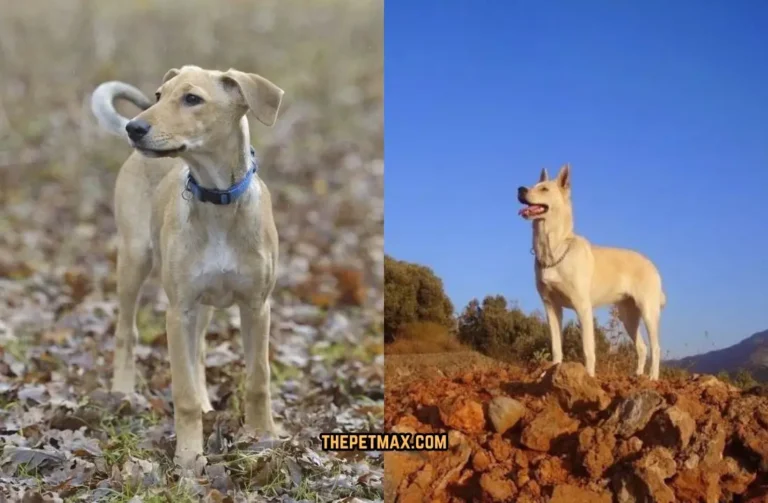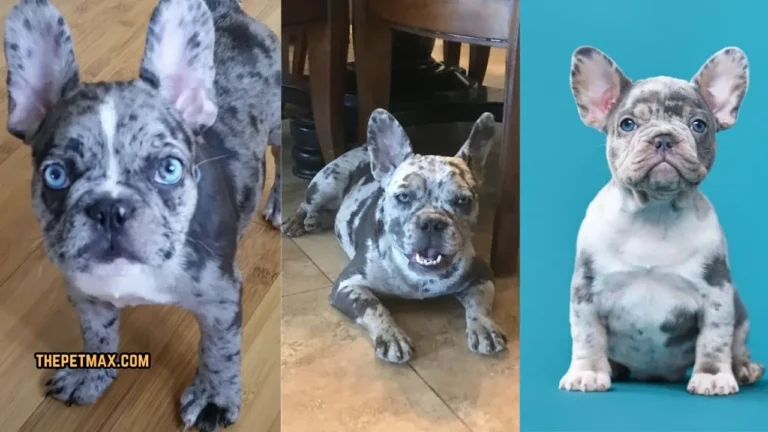Large Munsterlander Dog Breed Guide

The Large Munsterlander is an excellent and wonderful breed and has different black or brown and white coloring with spots and patches on its medium-length, silky fur. This breed is not only beautiful but he’s also a skilled shooter and kind to kids. The Large Munsterlander is a good choice for your upcoming family pet.
Kurt Von Kleist brought the Large Munsterlander to North America in 1966 from Munster, Germany. Since the Middle Ages, Large Munsterlander were bred for more than a century, getting from hawks and bird dogs. While it makes a great family dog, its hunting skill is what people like about it most.
Contents
- 1 Some Quick Facts about Large Munsterlander:
- 2 Large Munsterlander Dog Breed Overview & Appearance:
- 3 Large Munsterlander Dog Breed History:
- 4 Temperament of Large Munsterlander:
- 5 Are Large Munsterlander Good For Families?
- 6 Do Large Munsterlanders Get Along with Other Pets?
- 7 Food and Diet Requirements of Large Munsterlander:
- 8 Exercise Needs of Large Munsterlander:
- 9 How to Train Large Munsterlander?
- 10 Large Munsterlander Puppies:
- 11 Know About Large Munsterlander Coat:
- 12 Life Expectancy of Large Munsterlander:
- 13 Common Health Problems of Large Munsterlander:
- 14 Grooming Needs of Large Munsterlander:
- 15 Conclusion:
- 16 Related Posts:
Some Quick Facts about Large Munsterlander:
- Large Munsterlanders Are Excellent Pointers and Retrievers
- The Large Munsterlander Breed has Almost Vanished During the Great Depression and World War II
- The Large Munsterlander Originally Belonged to the German Longhaired Pointer Breed
Large Munsterlander Dog Breed Overview & Appearance:

The Large Munsterlander must have a long, dense coat, with a little of his smooth, short hair on top of his head. His coat should be flat, not wrinkled, and fit close to his body. The backs of his legs, tail, and ears should all have lush and thick feathers. It’s appropriate and even preferred in conformation shows for him to have feathers on his chest.
The Large Munsterlander’s skin should fit loosely over his body. His coloring should be creaking or ticked, with a white background and black patches. He may have a white spot or blaze on his forehead, yet if not his head is solid black.
| Weight | 23 to 35 Kgs |
| Height | Male: 22 to 26 Inches Female: 22 to 24 Inches |
| Lifespan | 12 to 14 Years |
| Group | UKC Gun Dog |
| Litter Size | 5 to 9 Puppies |
| Colors | The medium length coat is primarily white with larger spots and black flecks scattered everywhere, with a predominantly black head. |
| Size | Large |
| Temperament | Highly trainable, gentle, cooperative, courageous intelligent, and friendly |
| Type | Purebred |
| Suitable Owners | Active families, active singles, and family having a house with a yard |
| Comparable Breeds | German Longhaired Pointer and Irish Setter |
| Puppy Price | $1500 to $1900 USD |
Large Munsterlander Dog Breed History:
The German town of Munster is where the relatively new Large Munsterlander breed began in the early 1900s. Similar dogs can be traced back to the Middle Ages based on artwork, but the Large Munsterlander was not officially recognized as a breed until 1919. The breed originated from the German Longhaired Pointer, a crossbreed between several Spaniels.
The Large Munsterlander, which has been popular as a hunting dog throughout Europe for a while. The breed was almost vanished by the Great Depression and World War II, but it recovered after the conflict.
In 1966, the first Large Munsterlander immigrants to the United States arrived The Large Munsterlander Club of North America is in charge of the breed’s development in the US. In 2006, the breed was officially recognized by the United Kennel Club.
Temperament of Large Munsterlander:
The Large Munsterlander is easily trainable and has a quick learning curve. He needs lots of encouragement and a gentle touch because he is sensitive. He will need a lot of exercise because he is a sporting breed.
This also involves games which maintain mental stimulation and he needs ongoing training, but he can be a little independent. Don’t let him be left alone for too long or he’ll become annoying to your neighbors and become destructive.
His dream home is a working one where he can put his hunting dog training skills to use. He is a wonderful family companion because he is loving and affectionate. But he has high energy and needs lots of exercise to avoid frustration, just like all sporting dogs. Avoid leaving him alone outside as he may turn destructive. Make sure you give him plenty of opportunities to run because he can run for hours on end.
Are Large Munsterlander Good For Families?
Big Munsterlanders are great family dogs because of their lively and kind nature. Large Munsterlander spend a lot of energy outside but when they are inside, they quickly change the way they behave.
Because Large Munsterlander are so easily trainable, you can have a pleasant pet that the whole family will love. Their intense energy makes them perfect companions for kids.
Do Large Munsterlanders Get Along with Other Pets?

Large Munsterlanders love almost everything and everyone, including dogs and other pets.
Large Munsterlanders are hunting dogs, therefore keep that in mind. When they are around certain species, like rabbits or chickens, they respond naturally. Adopting a Large Munsterlander is not suitable for your home if you have pets that are species of prey.
While some Munsterlander owners were able to keep their pets away from cats, others have never had any problems. This is a decision that only you are able to make. Take your cat’s temperament into consideration and it is very easy to train the Large Munsterlanders Living together with a cat and they could work well for you.
Food and Diet Requirements of Large Munsterlander:
In comparison to dogs of smaller breeds, the Large Munsterlander likes an alternate nutritional balance, including vitamins and minerals. Eat smaller, more often to reduce the risk of bloating and stomach issues that the breed may be at risk to.
The Large Munsterlander requires premium dry food created especially for large dogs. The fact that this is a highly active hunting breed should also be taken into consideration and an active breed or working formula could be a wise decision. The Large Munsterlander’s main objective is hunting, yet he is calm and kind with kids.
Exercise Needs of Large Munsterlander:
For this breed, going for regular walks and throwing a ball is not enough. The LM has outstanding strength and it needs a backyard because it can run outside all day without getting tired. This breed is not appropriate for living in apartments.
Insufficient physical activity can result in problems with behavior. Without something to do with his energy, your dog will find other things to do with his time. Take your pet outside to ensure a stress-free existence at home.
You might be curious what kind of exercise is the best. Anything which is similar to swimming, hiking, and running. Just make sure the workout lasts for one to two hours and is intense.
How to Train Large Munsterlander?
The Large Münsterländer’s primary goal is hunting, yet he is calm and kind with kids. While he still needs training, the breed was developed for his built tracking, pointing, and retrieving abilities. Though he should be handled gently and trained using positive reinforcement methods, this breed is very intelligent and highly trainable.
It may take additional training to control the tendency to bark and become destructive when left alone for a long amount of time. Early socialization is advised, especially if you want to keep him in a house with other pets. But bear in mind that he has a tendency to chase and even attack small animals, so be careful around cats and other pets that are not dogs.
Large Munsterlander Puppies:

Be aware before searching for a Large Munsterlander, that most breeders refuse to place a Large Munsterlander in a home where the owners do not hunt. Because they were bred especially to track, point, and retrieve, these dogs perform best in homes where these skills are encouraged.
But hunting dogs are expensive and a Breeding Officer must approve every mating in the LMAA’s strict breeding program to ensure that the offspring meet the organization’s high standards for temperament, health, and physical characteristics.
Know About Large Munsterlander Coat:
One of the most separating features of the Large Munsterlander is his coat, which is medium-length and has a very varied pattern. The piebald gene, which is common in the breed, causes a wide variety of black- or brown-and-white patterns with solid areas, ticking, patches, and spots.
The vast majority of dogs have a black or brown head and a white tail tip. The coat is sleek, firm, and extremely dense. It needs to be brushed every day to avoid shedding and maintain its silky texture.
Life Expectancy of Large Munsterlander:
It is estimated that the Large Munsterlander has an average lifespan of 11 to 13 years, which is usual for a breed of its size. Make sure your dog receives a high-quality, healthful diet designed for large-breed dogs or an active breed formula to boost his life.
Common Health Problems of Large Munsterlander:
All dogs are at risk of certain health issues, but the Large Munsterlander breed is healthy. The breed is known to be prone to several conditions, such as osteochondrosis, cataracts, and hip dysplasia. Field injuries and ear infections may also be common in this breed.
Grooming Needs of Large Munsterlander:

It’s true that the Munsterlander needs a lot of grooming care. His coat is perfect for hunting over a variety of terrains, but because of its length and feathering, tangles easily form. A steel comb and brush with natural bristles will be required for his weekly grooming. To help minimize tangles, you can use a leave-in conditioner and a de-tangler on his coat.
It is a good idea to give him a quick brush after he has gone hunting so that any new tangles can be removed as soon as possible. He sheds his undercoat in the spring because he is a seasonal shedder. Females intact will shed after each heat cycle.
Frequent brushing will prevent loose and dead hairs from collecting on clothes and furniture. If the Munsterlander starts to smell, you can give him a bath about once a month. It is not advised to overbathe because it can irritate the skin.
Conclusion:
In the US, the Large Munsterlander is an uncommon breed. Loud noises like gunfire and fireworks terrify most dogs but not this breed. It is rare in a dog breed that is both pleasant and has a strong work ethic. They are happy, intelligent, and sweet dogs.
But everyone is not a good fit for this breed and by finding out more about their extraordinary athletic skills and journey, we are all able to respect them. Maybe there is someone you know who owns a large Munsterlander. Make sure to play with him if you do as he is a very friendly person.




